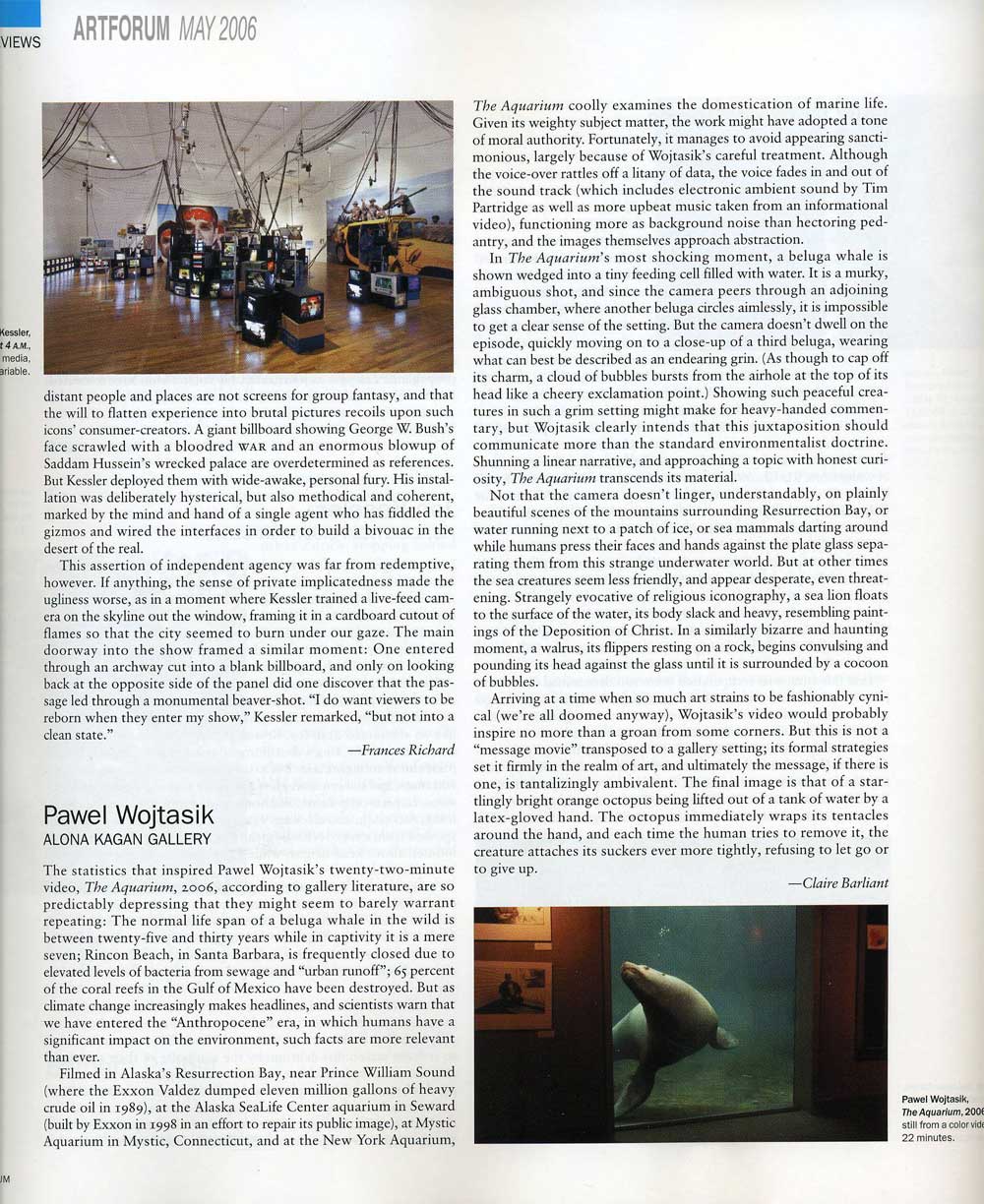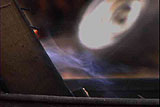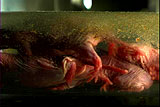PAWEL WOJTASIK
email contact
Born in Lodz, Poland
Lives and works in Brooklyn, NY
An artist, to paraphrase food critic Anton Ego in Brad Bird’s Ratatouille (2007), “can come from anywhere.” Pawel Wojtasik, who spent his childhood in Poland, then moved to New York by way of Tunisia, is evidence that an artist can also arrive on the scene at any point in life: Wojtasik has emerged as an accomplished video artist during his late fifties, though his work, made in the aftermath of a mystic experience, often has a youthful glow.
Roughly speaking, Wojtasik has produced two kinds of video work: short pieces on unusual topics—sewage treatment, naked mole rats, pigs, autopsy—and large-scale gallery installations about particular places. Nearly always shot with a tripod and on digital video, and with a rigorously formal compositional sense, Wojtasik’s imagery is often simultaneously beautiful and disconcerting: the elegance of the imagery at the beginning of “Dark Sun Squeeze” (2003), for example, belies the fact that we are looking at human waste in a sewage treatment plant.
For Wojtasik, making art is about facing fear—the fear of death, of pain, of loss, even the fear of seeing certain kinds of imagery on screen—and challenging taboos. Nowhere is this more obvious than in “Pigs” (like most of Wojtasik’s work, “Pigs” has existed in several versions, the most recent was finished in 2010), which upends the convention in nature film that animals should be represented in a way that is not disgusting. The pigsty in “Pigs” is a pigsty, and the feeding frenzy, a horror. His most recent work, “Nine Gates” (2011), on the other hand, pays homage to what Apollinaire called the nine gates to a lover’s body, in a work that is a glorious addition to an avant-garde mini-tradition that includes Willard Maas’s “Geography of the Body” (1943) and Yoko Ono’s “Fly” (1970).
Wojtasik’s more publicly oriented work is more directly polemical. “The Aquarium” (2006) focuses on how aquariums contribute to the illusion that environmental damage to the world’s oceans is of minor importance. “Below Sea Level” (2009), the 360-degree panoramic film created for the MASS MoCA (Massachusetts Museum of Contemporary Art) exhibition called “These Days—Elegies for Modern Times” and recreated in New Orleans for Prospect.2 Biennial (and on view through January 29, 2012), honors New Orleans in the wake of Katrina, emphasizing the continued survival of a region that has been living on the edge for decades. The five-screen video “At the Still Point” (2010) is an evocation of the collision of the old and new and of life and death in India, focusing on Varanasi, where the bodies of the dead are burned next to the Ganges, on the ship-breaking industry in Alang, and on a giant traditional laundry in the shadows of modern skyscrapers in Bombay.
--Scott MacDonald
Pawel Wojtasik's critical, and at points documentary-style video work foregrounds the means by which material waste, including that produced by the human body, is processed and eliminated. A culture of increasingly rapid consumption does not often permit glimpses into how its refuse is handled. While we have a vague idea what happens after items are thrown away, visceral experiences of these activities are scarce. Wojtasik takes us behind the scenes, and the results are unexpectedly beautiful and horrific.
Exploring numerous sites of waste treatment, Wojtasik has chronicled methods used at such diverse locations as a supermarket, a garbage transfer station, a car junkyard, and an individual's own home. Employing slow-motion imagery and clear, crisp ambient sound recorded on-site, each piece reveals an open-ended narrative that encourages genuine inquiry into what these endless processes mean for our physical and ideological world. Firehole
Dark Sun Squeeze (2003-2004), shot at a sewage treatment plant, can be viewed as a single or three-channel projection piece. In a reversal of the technique used in Firehole
-- Sarah Kessler / PS1


 MENU
MENU